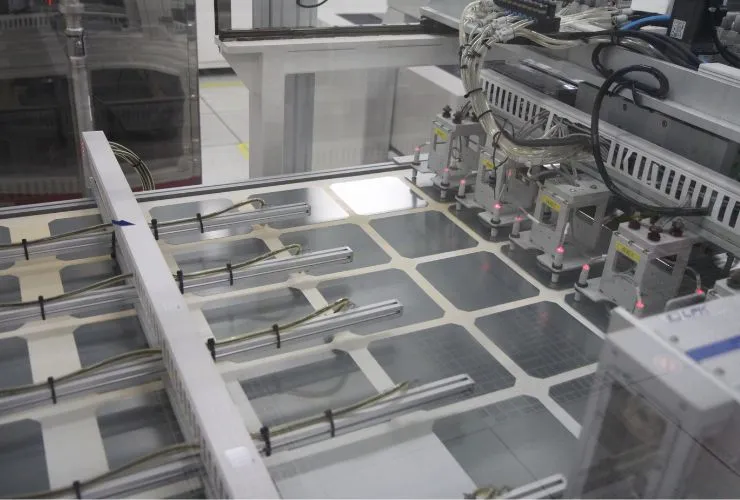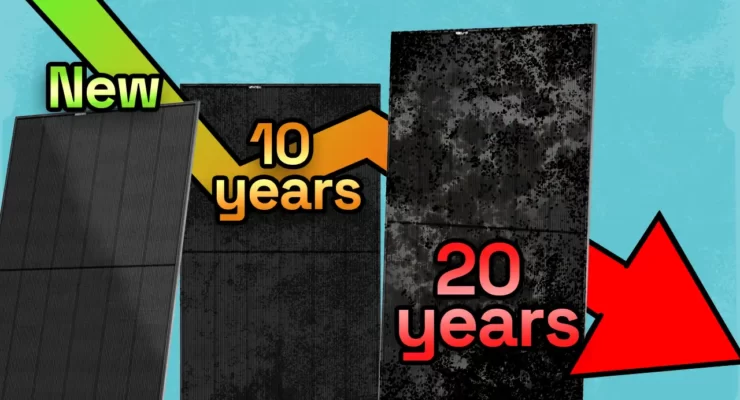Fast read
Solar cells, and therefore panels containing cells by design degrade over the years. Photovoltaic cell degradation occurs as the semiconductor material ages and becomes less efficient at converting sunlight into energy.
The encapsulant protecting PV cells can deteriorate from environmental stresses, affecting efficiency. Light-induced degradation from initial exposure to sunlight also reduces electron movement within the cells and impacts the performance of quality.
Solar panels can also lose efficiency over time because of physical, environmental, and chemical factors. Exposure to elements like heat, cold, wind, rain, hail, and storms can create stress on the panels, causing potential microcracks in panel cells and that can lead to a performance reduction in rare cases.
Despite these factors, quality solar panels are designed to be durable, and their performance warranties typically cover a gradual loss of efficiency over the years, with performance warranted often at being around 90% of their original capacity after 25 years of operation.
Will my solar panels lose efficiency over their lifespan?
Solar panels are well-known for generating clean, renewable energy from sunshine. However, as with any technology, they are prone to wear and tear and can lose efficiency with time. Solar panels lose efficiency for various reasons, including physical, environmental, and chemical issues. This post will examine these reasons and explain how father time leads to the progressive deterioration of solar panel’s performance.
In saying this, quality solar panels are tested extensively and designed to be as durable as possible, with a wide range of tests undertaken to ensure they can handle the extreme conditions they are exposed to.
All solar panels also have a performance and product warranty that is included with them, and for quality products, they are covered for 98% of their initial power output in the first year and as low as 0.3% to 0.5% further degradation or loss of efficiency per year onwards up to 25 years.
This means after 25 years, high-quality panels can still produce more than 90% of their initial output. Cheap solar panels on the other hand deteriorate faster and could have lost more than 10% more efficiency over their lifespan than quality solar panels.
Why do solar panels lose efficiency?
Solar panels are installed on the roofs of houses and businesses. As a result, they are constantly exposed to the elements and UV, day in and day out, for years. The heat of the day and summer, the cold of the night in winter, winds, rain, hail, storms, extreme heat etc, create stress on the solar panel cells.
Dramatic temperature changes also can cause deterioration to the cell surface over time which can lead to some loss in power.
Phenomena include light-induced degradation, which is the initial and ongoing impact of light hitting the solar cells, which reduces the movement of the electrons within the cell, and reduces performance when the solar panels are first installed and exposed to light from what they were tested at in a factory. And just like a battery in your phone over time solar panel performance decreases.

Cell degradation
Photovoltaic cells, which convert sunlight into electricity, are at the heart of a solar panel. Frequent exposure to sunlight causes the cells to deteriorate over time. The deterioration of the semiconductor material within the cells is a crucial factor.
Exposure to ultraviolet (UV) radiation, temperature variations, and moisture can all contribute to this degradation. As the material ages, it becomes less efficient in converting sunlight into energy, resulting in lower overall solar panel performance.
Encapsulation issues
An encapsulant, such as ethylene-vinyl acetate (EVA), encapsulates the PV cells and protects them from environmental variables in solar panels. However, exposure to heat, UV radiation, moisture, and other environmental stresses can cause the encapsulant to deteriorate over time. This degradation can reduce the solar panel’s efficiency because the cells are no longer effectively shielded.
Potential induced degradation
Potential-induced degradation (PID) is a significant issue for solar panels. Imagine a long chain of solar panels connected together. The panels at the end of the chain get hit with the highest voltage. This high voltage messes with the aluminium frame’s ability to conduct electricity.
As a result, the cells inside the solar panels lose their efficiency, and the panels don’t work as well as they should.
PID can significantly mess up how well solar panels work and how long they last. Knowing about PID is super important for folks who use or install solar panels. They need to take steps to stop PID from happening. That means setting up the solar PV system right, keeping it in good shape, and using materials that resist PID.
By dealing with PID, solar panel users can make sure their panels work great for a long time.
Old age
Solar panels have different parts like connectors, cables, and inverters that help them work. But being out in the environment all the time can wear these parts down. They might start degrading, which means they don’t work as well as before. This can happen because they get older or because they’re exposed to things like sunlight, rain, or temperature changes.
When these parts degrade, they don’t let electricity flow through them as easily. This can make the solar panel system loss efficiency and produce less electricity.
So, it’s important for people who use or install solar panels to keep an eye on these parts. They need to check them regularly and replace them if they start wearing out. That way, the solar panels can keep working well and making electricity for a long time.
So that is why solar panels lose efficiency
Quality solar panel manufacturers are aware of the potential risks that could affect the performance of solar panels as time goes by. They take steps to reduce these risks during the manufacturing process, ensuring that their panels maintain high-performance levels over the long term.
Although it’s natural for solar panels to become less efficient as they age, top-notch solar panels can still operate at approximately 90% of their original capacity even after 25 years of continuous use. This impressive durability and stability highlight the reliability of quality solar panels.
On the other hand, cheaper solar panels often fall short in performance and longevity. Their lower-quality materials and construction mean that their performance tends to decline more rapidly over time. In other words, while quality solar panels stand the test of time, cheaper alternatives may not be as dependable in the long run.



